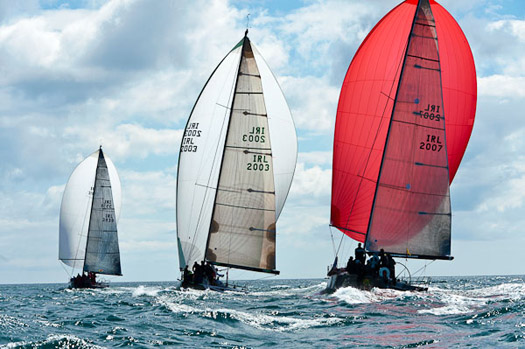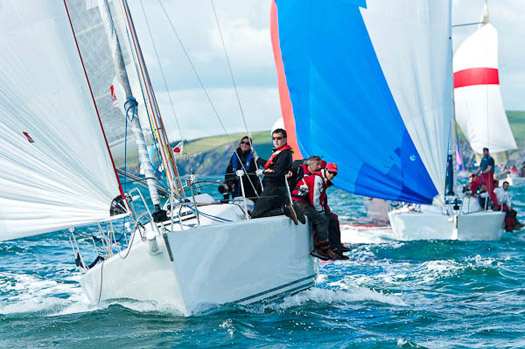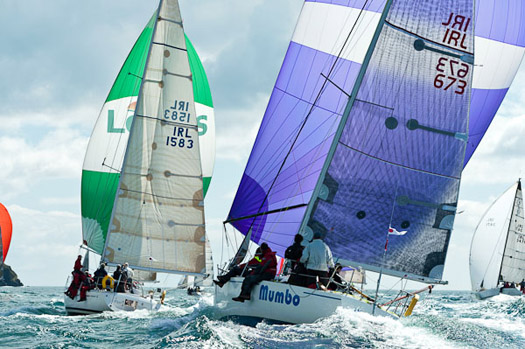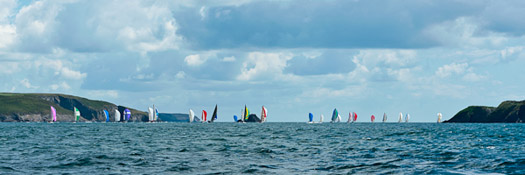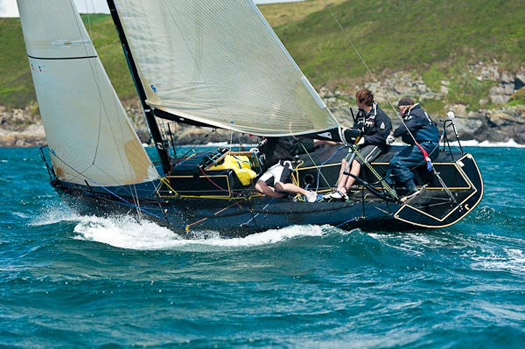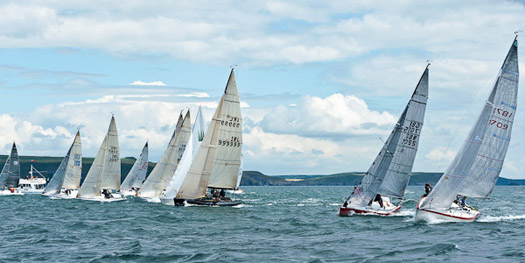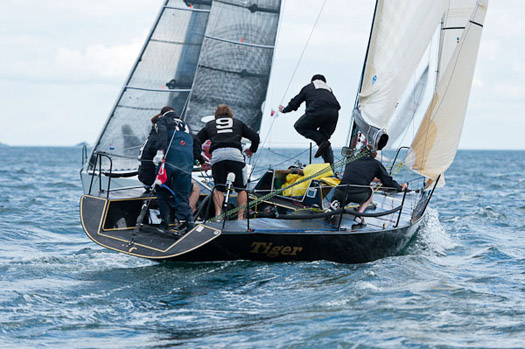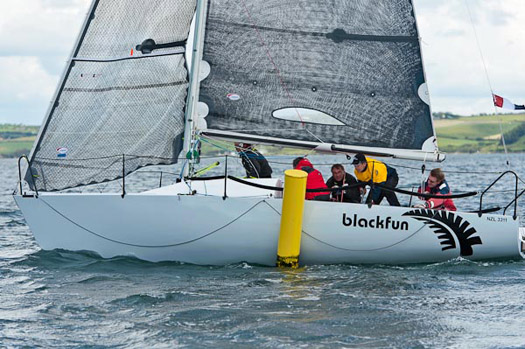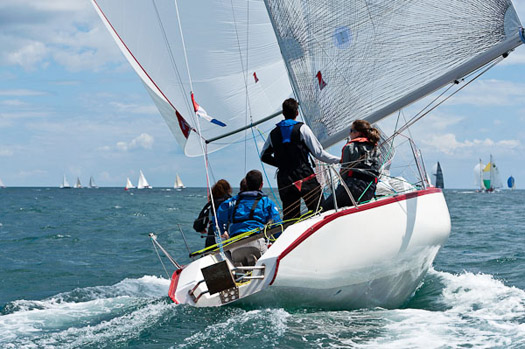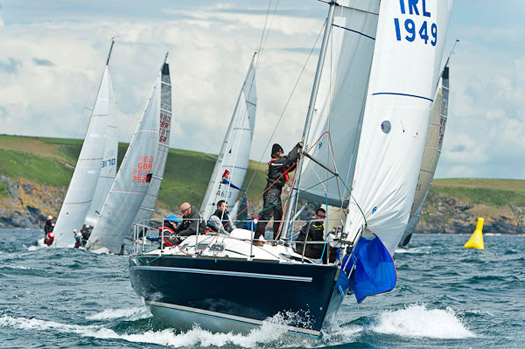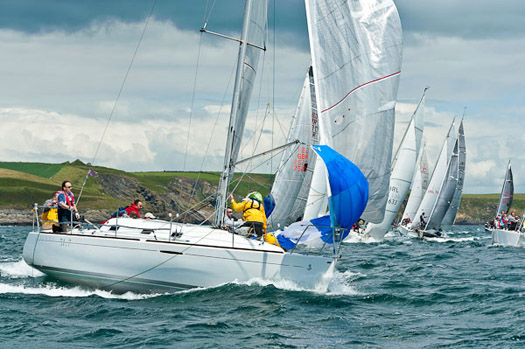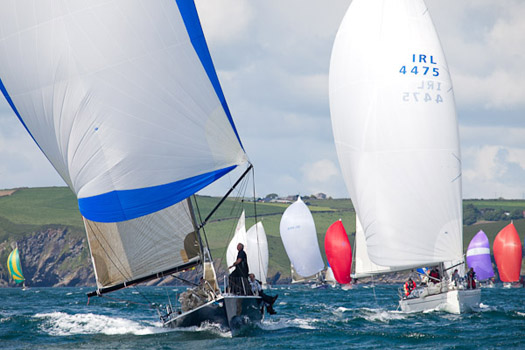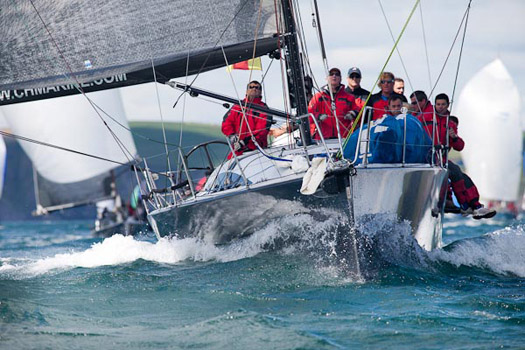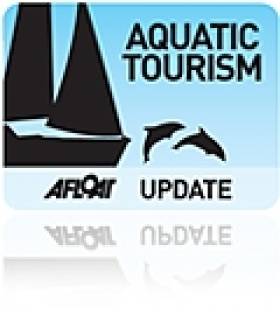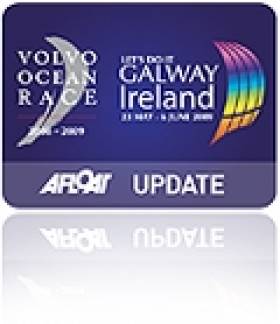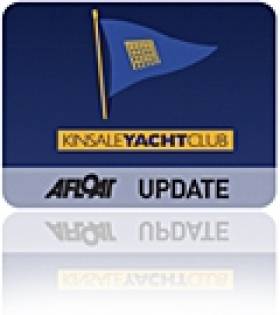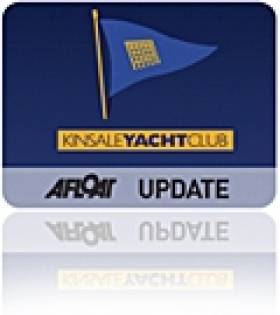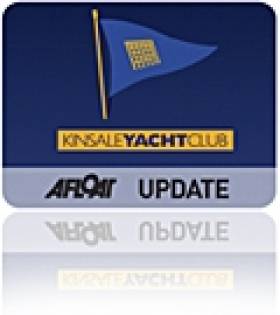Displaying items by tag: Kinsale
Cork The Place to Be For a Holiday On The Sea
#TOURISM - Winter might be upon us, but it's a great time to plan a new year holiday in Ireland on the sea, according to the UK's Daily Echo.
From night-time paddling in with renowned kayaking instructor Jim Kennedy, to snorkelling in Baltimore, relaxing in Skibbereen and and fresh seafood lunches in Kinsale, a vacation in Cork can appeal to any taste.
Whale and dolphin watching is a big draw for the region, too, as Ireland's coast – the first cetacean sanctuary in Europe - plays host to a growing variety of species.
The summer feeding grounds off the southern coast are particularly busy, and tourist boats are often treated to whales breaching the surface and surrounded by dolphins putting on a show.
The Daily Echo has more on the story HERE.
Dragon Gold Cup for Kinsale in 2012
#DRAGON – Irish sailors will be vying for the prestigious Dragon Gold Cup from 8th-15th September 2012 when it is contested on Irish waters by Kinsale Yacht Club.
Leading the Irish challenge will be Dun Laoghaire sailor Martin Byrne who won the Dragon Edinburgh Cup last July.
Kinsale last held a major Dragon event in 2003 for the European Championships. Many of the famous sailors who attended that event will be expected to return for the Gold Cup in 2012, including current world champion Lawrie Smith, ex world champions Poul Ricard Hoj-Jensen and Tomas Muller and a number of former world champions and Olympians from other classes who now compete in the Dragon class internationally as well as the strong Irish Dragon fleet.The Dragon Gold Cup was last held in Ireland in 1997 when the Royal Irish Yacht Club in Dun Laoghaire hosted the event.
The 2012 Cup will attract approximately 80 boats and participants will be coming from all over the world, including Australia, Scandinavia, Russia, Ukraine, Ireland, UK and other European Countries.
Kinsale Yacht Club is well positioned to host this major Dragon event as it is has a good reputation for great racing, top class facilities on and off the water as well as great accommodation and restaurants that bring sailors back to Kinsale.
The Dragon attracts competitors from all over Europe, along with Royal participation, ex Olympian Pol Ricard Hoj-Jensen, many current professionals, world champion, Lawrie Smith and very accomplished Corinthians. The Gold Cup is a very Special event as participants aren't required to qualify, unlike the Worlds and Europeans therefore it attracts a superb atmosphere with a mix of serious sailors and those interested in the sailing and social programme.
The notice of race has just been finalised and may be viewed on the event website.
The Dragon Nationals held in Kinsale in August 2011
Green Dragon Sailing for Kinsale then Rotterdam
Galway's round the world yacht, the Volvo 70 Green Dragon, sailed from Galway Port this morning. Her first port of call is Kinsale and on Thursday she will sail for Rotterdam.
From there she will go on a low-loader for Frankfurt to become a static exhibit rather than a sailing craft. She is to appear at the world famous Frankfurt Motor Show where Galway owners say 'she will be put on display in a premier position' - fully rigged - promoting the Volvo Ocean Race 2011 - 2012 and the Race finish in Galway as part of a global village exhibtion showcasing Irish innovation, food and the marine.
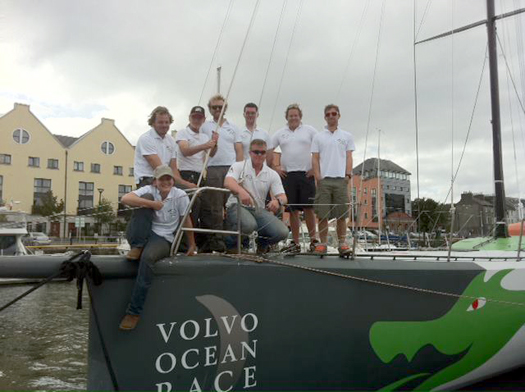
The Green Dragon crew who are enroute for Rotterdam via Kinsale
"At this major global exhibition in Germany this will be a fantastic opportunity to showcase Irish Sailing and our plans for 2012 - and also to show our support for Team Sanya our Chinese Irish Volvo Ocean Race Team. A formal send off is planned from Dublin for Team Sanya on Monday 5th Sept", says Enda O'Coineen of Let's Do It Global, who is sailing on the first leg of the voyage to Frankfurt.
Byrne Retains Irish Dragon Title at Kinsale
Martin Byrne retained his title as National Dragon Champion in Kinsale last weekend, adding to his Edinburgh Cup victory last month in Abersoch writes Tim Pearson.
Byrne, with crew Adam Winkelmann and Pedro Andrades, was pushed hard by Jay Bourke and Cameron Good throughout the four day event which saw a variety of testing conditions in a predominantly moderate to fresh southwesterly airflow.
On the Friday racing was conducted in a sea mist which reduced visibility at times to 200 metres and required the competitors to bring their navigational skills into play.
However, Race Officer Alan Crosbie, using the event as a dry run for the Gold Cup in September 2012, when around 80 Dragons are expected to compete in the waters off the Old Head, was master of the conditions and got the 7 race series off on time.
2012 will be a special year for Dragons in Ireland, and there is already much international interest in a veritable grand prix circuit which will start with the Edinburgh Cup In early July, move to Dublin for the Nationals and culminate in Kinsale with the Gold Cup.

Irish Champions Martin Byrne, Adam Winklemann and Pedro Andrades
2011 Dragon Irish National Championships:
1. Martin Byrne
2. Jay Bourke
3. Cameron Good
Lyver Race Report - Holyhead to Howth
Following very closely after the Dingle Race, ICRA Nationals in Crosshaven and the Sovereign's Cup in Kinsale, it was understandable that the numbers of ISORA boats taking part in the Lyver Race was small. The "grim" forecast of no wind did not encourage any boats to take part either. Never the less, five ISORA boats joined the 10 other boats and came to the start shortly after 19.00 on Friday the 1st July.
In view of the forecast the Sailing Committee shortened the race to the minimum requirements of RORC to qualify for the Fastnet Race – 75 miles. The time limit for the race was 24 hours after the start. With little wind at the start, and a north going tide just starting, they chose a "waypoint" just south of the Isle of Man as the turning mark and then to Howth.
This decision turned out to be inspired. The little wind there was there at the start was from the north-west so the first leg was a beat to the waypoint. Those boats who took the north leg from the start shot away in the tide while the others appeared to remain static in
Holyhead Bay. The forecast was for the wind to veer around to the south later. All through the night the winds were very fickle and boats had the chase constantly fluctuating breezes. Despite the little wind, it held for most of the night. At day break the wind started to pick up from the forecasted South and boats popped their kites and headed for the waypoint. There was a great gathering of boats at the waypoint with 12 boats visible around the waypoint.
The next leg to Howth was a white sail reach. This turned out to be an intensive chase with the J111 "Arabella" taking the lead followed by two Prima 38's, Stephen Tudor's "Sgrech" and Matt Davis's " Raging Bull". The wind from the south increased in strength as the fleet approached Howth.
While "Arabella" took line honours, it only managed to take 2nd place overall. "Sgrech" took 1st place and "Raging Bull" took 3rd place. All the boats that had not retired, managed to complete the course within the time limit.
The boats taking part in the race were fitted with trackers. The progress of the race can be followed by clicking the following link: http://live.adventuretracking.com/lyver2011
The prize-giving took place in Howth Yacht Club on Saturday evening.
After 6 races and one discard John Twomey and his crew Anthony Hegarty and Ian Costello, all from Kinsale Yacht Club, are lying in 9th place overall in the 23 boat Sonar Class. John and his crew have just finished competing in Shilleagh at the Sovereign's Cup Kinsale, finishing 5th in Class 3 IRC and the ICRA Championships at Royal Cork Yacht Club where they finished 4th overall in Class 3 IRC finishing behind Tiger, Anchor Challenge and Blackfun in that order, an excellent performance indeed.
The IFDS World Championships, organised in 2011 by the RYA, is the most prestigious event in the disabled sailing calendar outside of the Paralympic Games and is being held at the Weymouth and Portland National Sailing Academy (WPNSA) that will play host to the sailing competition for the London 2012 Olympic and Paralympic Games.
The event is taking place from July 1st to 8th, 2011, and forms the second qualifying event for the 2012 Paralympic Games sailing competition, with entries exceeding 100 boats across 3 Paralympic Classes. The KYC team is hoping to make the Irish qualification for the Sonar class having just missed the qualification by one point last time around.
All the competitors in the huge entry are keen to gain experience of the Olympic and Paralympic venue in the run-up to 2012, making this event an important fixture in the international calendar.
Racing continues through to Friday 8 July.
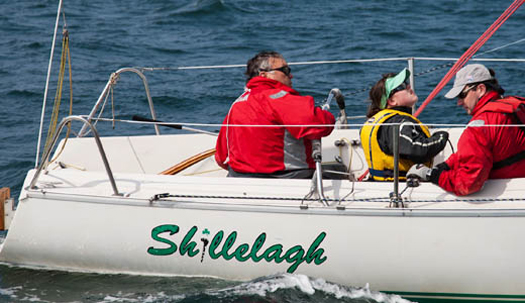
A recent shot of John Twomey and crew in Action in Shillelagh. Photo: Robert Bateman
KInsale Puts on a Sovereign's Cup Stormer
There were exhilarating conditions at the Sovereign's Cup at Kinsale today and some great racing despite the misery of torrential rain writes Claire Bateman.
Class Three IRC which includes the quarter tonners was sailing windward/leeward courses in Bullen's Bay between Black Head and Hake Head. In their first race they had 18/22 knots of wind with tide. Aguila was first to the mark, followed by Tiger and then Anchor Challenge, and they were running with speeds up to 14.5kts under spinnaker. However by the second race of the day the wind had increased and the tide had turned making for very hairy sailing indeed. Leading at the weather mark Aguila hoisted her kite, had a massive broach, and was on her side for some minutes during which time Anchor Challenge passed as did Tiger and other boats in the fleet.
In the final result Anchor Challenge was first over the water beating Tiger. However, when the handicap was applied, Tiger had beaten Anchor Challenge by 5 seconds with Aguila third. Flasheart, a visitor from Britain, had a pitch pole type gybe resulting in the injury of a crew member. After medical attention the injured sailor was well enough to attend the Quarter Ton reception at the Trident Hotel so thankfully all is alright in the world. The interesting thing for tomorrow is that Tiger and Aguila are both on equal 10 points followed by Anchor Challenge on 12 and, equally interesting Blackfun and John Twomey's Shillelagh are on equal points of 24 each.
In Class Zero IRC Antix had two firsts and with the help of Olympian son Peter, and all the Antix high powered crew, achieved speeds of up to 19.5kts in the conditions. Now that a discard has been applied Jump Juice has come up the ladder and lies second going into tomorrow's racing followed by Independent Bear and Gloves Off on 15 points each.
In Class One IRC the 21 boat fleet includes seven J109s, in itself a class within a class, and is providing fiercely competitive sailing in this tightly fought class. EOS leads on 10 points, with Jelly Baby on 13 points, followed by Storm on 19 points and with Robert O'Leary's Antix Beag on 24 points and having enjoyed a tremendous first place today.
Class Two IRC were sailing windward/leeward courses down off the Sovereign Islands and here the Sigma 33s and Corby 25s are battling it out for the top of the leaderboard. Tim Goodbody's White Mischief leads on 13 points with Yanks ¢ ffrancs on 18 points followed by another Corby, Allure, on 22 points and with Clem and Wendy McElligott's Sigma 33 on 31.5 points.
So, tomorrow will be interesting to say the least. Perhaps a windy day but we hope, without the rain.
However, this writer has a feeling that the surge of interest tomorrow will veer towards the awarding of the new Michelle Dunne Prix d'Elegance Trophy. It will indeed be a proud owner that will be the recipient of this magnificent trophy and we all eagerly await the outcome.
Big Wind Shifts Can't Stop Sovereign's Cup Progress
After retaining the Sigma 33 title on Belfast Lough on Sunday, Tim Goodbody's Sigma 33 is at the top of the class two fleet of the Sovereign's Cup tonight following a win off the south coast today. The Royal Irish skipper leads the Crosshaven based Corby 25 Yanks and Ffrancs by eight points but only after the coastal race to Courtmacsherry was shortened.
Although the official scoreboard shows results for two coastal races there was actually only one was sailed but it counted for double points, so the scoreboard reflects this calculation.
In class one Kinsale's David Scott in Eos is top of the 21-boat division. The local skipper made the best of the light winds and rains that prevailed. The X-362 Sport design leads a trio of J109s, Jelly Baby, Jetstream and Storm.
In class three Eamon Rohan's Anchor Challenge lost the overall lead now held jointly between Tiger's (N. Kennefick) and Aguila (E. Gray).
Despite the fact Anthony O'Leary in Antix was forced to restart one race today normal service has returned to class zero after yesterday's blip in the coastal race. Afloat's Sailor of the Year for 2010 was the winner of the first race today but a fifth in the second does not stop him heading the top of the ten boat leaderboard. Jump Juice and Gloves are joint second. Bob Bateman's photos here.
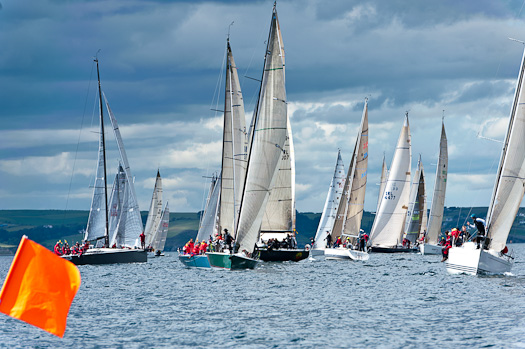
Antix (far left of shot) returns to the line after a premature start. Photo: Bob Bateman
Recently crowned National champion Anthony O'Leary had to be content with second in yesterday's coastal course of the Sovereign's Cup when Neil White's Independent Bear bested the Royal Cork champion in the opening race of the four day regatta. Ten boats are competing in Class Zero.
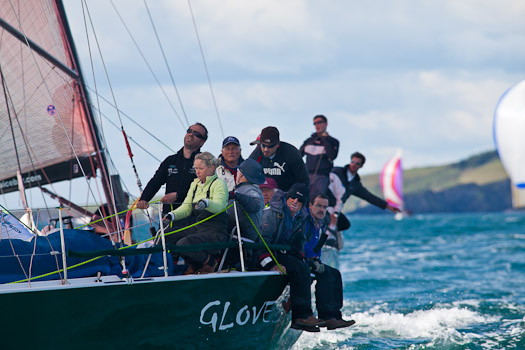
Gloves Off, third in Class Zero. Photo: Bob Bateman
Waterford Harbour's Shane Statham leads Cruiser TwoI IRC after the first two windward-leeward races. The opening races were sailed in 12-15 knot perfect north-westerly breezes allowing the Kinsale event to live up to its pre-event billing as the south coast's biggest and best sailing event of 2011. 23 boats are competing in Class two.
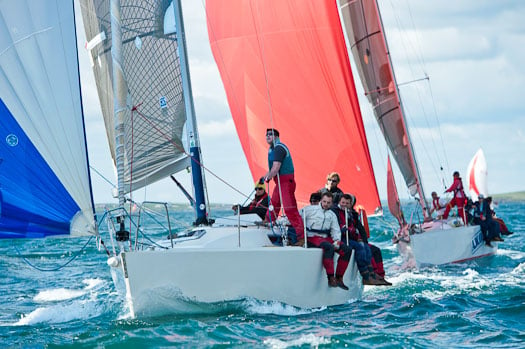
Tight racing with the J109s. Photo: Bob Bateman
In Class One, last weekend's Irish Cruiser Racing Association champion, Pat Kelly's J109 Storm from Howth, ended in fifth place. Rival Cork sistership Jelly Baby took the honours. 21 are competing.
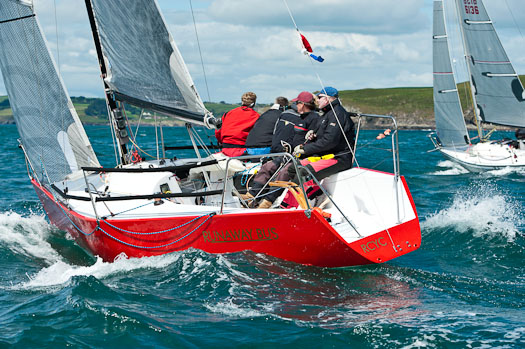
Quarter ton action. Photo: Bob Bateman
In Class 3 IRC (the Quarter ton Class) Eamonn Rohan's Anchor Challenge has the lead from Aguilla (Rob Gray) with Tiger (Kenefick/Kenefick/O'Brien) now third. Racing continues this morning and continues through til Saturday. 12 are competing.
Provisional (overall) results after day one – Class 0 IRC (Coastal): 1st Independent Bear (N White); 2nd Antix; 3rd Gloves Off (K Twomey).
Class 1 IRC (Coastal): 1st Jelly Baby (Nagle and O'Mahony); 2nd EOS (Dave Scott); 3rd Jetstream (Redden Bros). Class 2 IRC: 1st Slack Alice (Shane Strattan); 2nd Yanks $ Francs (Vinnie O'Shea); 3rd White Mischief (Timothy Goodbody).
Class 3 IRC (Quarter ton Class): 1st Anchor Challenge (Eamonn Rohan); 2nd Aguilla (Rob Gray); 3rd Tiger (Kenefick/Kenefick/O'Brien).
Class 5 IRC: 1st. Samba (John and Pat Downing) 2nd Orna (Philip Dilworth). 3rd. VSOP: (Donal McCarthy).
Sovereign's Cup Photos - Day One
Waterford Harbour's Shane Statham leads Cruiser II IRC after the first two windward-leeward races of the Sovereign's Cup today. The opening races were sailed in 12-15 knot perfect north-westerly breezes allowing the Kinsale event to live up to its pre-event billing as the south coast's biggest and best sailing event of 2011. Here's Bob Bateman's photos to prove it:
